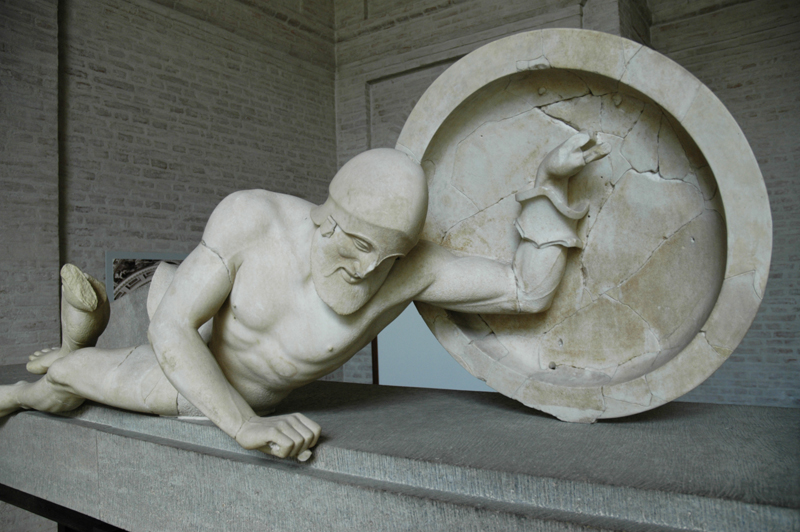
The MET Cloisters is a separate museum in Fort Tryon Park in Washington Heights, Upper Manhattan, New York City. The Cloisters specializes in European medieval architecture, sculpture, and arts, focusing on Romanesque and Gothic art and architecture.
It has an extensive collection of medieval art-works shown in architectural settings sourced from French monasteries and abbeys. Its buildings are centered around four cloisters, which were dismantled in Europe between 1934 and 1939 and relocated to New York.
They became part of the Metropolitan Museum’s Cloisters collection and were reconstructed into this museum’s design built into a hill, comprised of upper and lower levels.
The plan, layout, and ambiance of the building are intended to evoke a sense of the religious and monastic life of medieval European
The Cloisters has medieval gardens and a series of chapels and period rooms and spaces. It holds about five thousand works of art and architecture from Europe, mostly dating from the Byzantine to the early Renaissance periods.
The museum’s collection includes sculptures, tapestries, illuminated manuscripts, and paintings.
The MET Cloisters is a separate building located in Fort Tryon Park and dedicated solely to medieval art.
The Cloisters building was completed was in 1938 and named The Cloisters on account of the five medieval French cloisters whose salvaged structures were incorporated into the modern construction.
Within the Cloisters Museum, there are five thousand objects all related to medieval European works. The collection features items of outstanding beauty and historical importance.
A Virtual Tour of the MET Cloisters
- Annunciation Triptych (Merode Altarpiece) by Robert Campin
- The Belles Heures of Jean of France, Duke of Berry
- Palmesel
- Aquamanile in the Form of a Lion – German
- The Fuentidueña Apse
Highlights of The Cloisters Museum Collection
Annunciation Triptych (Merode Altarpiece) by Robert Campin
Annunciation Triptych by Robert Campin, also known as the Mérode Altarpiece, is oil on oak in three panels.
This masterpiece represents from left to right, the donors kneeling in prayer in a garden, the Annunciation to Mary, which is set in a contemporary, domestic setting, and Saint Joseph as a carpenter.
The painting contains many religious symbols, including the lily symbolizing Mary’s purity, and the Holy Spirit represented by the rays of light and a small white figure with a cross, coming from the left-hand window in the central panel.
The Belles Heures of Jean of France, Duke of Berry
The “Belles Heures” or “The Beautiful Hours” is a beautifully illuminated manuscript book containing prayers to be said by the faithful at each canonical hour of the day.
The French Duke of Berry (French: Jean, Duc de Berry) commissioned this book in 1409 for his private use. Belle Heures was designed for his wishes and is famous because of its many lavish decorations.
Palmesel
“Palmesel” is the German word for “palm donkey” and refers to the statue of Jesus on a donkey, mounted on a platform with wheels, and is used in Palm Sunday processions.
Palm Sunday is a Christian feast that falls on the Sunday before Easter. The feast commemorates Jesus’ triumphal entry into Jerusalem, an event mentioned in the four canonical Gospels.
Aquamanile in the Form of a Lion – German
This Aquamanile in the Form of a Lion is an elaborate water vessel used for handwashing. The lion is depicted with a broad-chested mane and an open mouth with visible teeth and tongue.
The proud and alert lion was worthy of its image as king of the beasts.
The Fuentidueña Apse
The Fuentidueña Apse is a Romanesque apse which dates to before the 1200s built as part of the San Martín Church at Fuentidueña, Spain. It was built when the town was of strategic importance to Castile’s Christian kings in their defense against Moorish invaders.
The church was constructed on an imposing hill below a fortified castle. Today the apse is part of the Met Cloisters in New York. The Met Cloisters is a museum specializing in European medieval art and architecture, focusing on the Romanesque and Gothic periods.
The Fuentidueña chapel is the Cloisters museum’s largest room, and its centerpiece is the Fuentidueña Apse. It was acquired for the Cloisters in 1931, following three decades of complex negotiation and diplomacy.
The structure was disassembled into almost 3,300 mostly sandstone and limestone blocks, each individually cataloged, and shipped to New York.
It was rebuilt at the Cloisters in the late 1940s. It was such a complex reconstruction, and the chapel was not opened to the public until 1961.
Romanesque Art
Romanesque art is Europe’s art from about 1000 AD to the rise of the Gothic style in roughly the 12th century.
Art historians created the term to describe the Romanesque architecture, which retained many essential features of the Roman architectural style.
Notably round-headed arches, barrel vaults, apses, and leafy decoration. In Southern France, Spain, and Italy, these structures represented continuity with Late Antique.
The Romanesque style was the first style to spread across the whole of Catholic Europe, whose art was also greatly influenced by Byzantine art.
Romanesque Architecture
Romanesque architecture is an architectural style of medieval Europe characterized by semi-circular arches. The beginning of the Romanesque style ranges from the 6th to the 11th century, depending on the region.
It combined features of ancient Roman and Byzantine buildings known for their massively thick walls, round arches, sturdy pillars, barrel vaults, massive towers, and decorative arcading. In the 12th century, it evolved into the Gothic style, which is marked by pointed arches.
Romanesque architecture was the first pan-European architectural style since Imperial Roman architecture. The Romanesque style in England is referred to as Norman architecture.
Gothic architecture
Gothic architecture is an architectural style that flourished in Europe during the High and Late Middle Ages. It evolved from Romanesque architecture and was succeeded by Renaissance architecture.
Originating in 12th-century France and lasting into the 16th century, Its characteristics include the pointed arch, the ribbed vault, and the flying buttress.
Gothic architecture is the architecture of many of Europe’s current great cathedrals, abbeys, and churches.
Gothic revivals began in mid-18th-century England, which spread through 19th century Europe and continued, mainly for religious and university structures, into the 20th century.
Gothic Art
Gothic art was a medieval art style that developed in Northern France out of Romanesque art in the 12th century. It spread to all of Western Europe and much of Southern and Central Europe.
Art in the Gothic period included sculpture, panel paintings, stained glass, frescos, and illuminated manuscripts. The earliest Gothic art was a monumental sculpture on the walls of Cathedrals and Abbeys.
In Gothic art, the Virgin Mary’s images changed from the Iconic Byzantine form to a more human and affectionate mother, cuddling her infant and showing the refined manners of a well-born aristocratic lady.
The MET Cloisters
- Museum: The MET Cloisters
- City: New York
- Country: United States
- Established: 1938
- Type: Medieval Art Museum, Romanesque Architecture, Gothic architecture
- Location: 99 Margaret Corbin Drive, Fort Tryon Park, Manhattan, New York City
The MET Cloisters – Map
The MET Cloisters – Virtual Tour
The MET Cloisters – Virtual Tour
The MET Cloisters – Virtual Tour
A Virtual Tour of Museums in New York
- Metropolitan Museum of Art – MET
- Museum of Modern Art, NYC
- Intrepid, Sea, Air & Space Museum
- Neue Galerie New York
- The Cloisters
- Solomon R. Guggenheim Museum
- American Museum of Natural History
- Museum of the City of New York
- New-York Historical Society
- Frick Collection
- Met Breuer
- Rubin Museum of Art
- Jewish Museum
- Whitney Museum of American Art
- National Museum of the American Indian
- Brooklyn Museum
- New York Transit Museum
- Brooklyn Historical Society
The Met 360° Project: The Met Cloisters
Glories of Medieval Art: The Cloisters
A Medieval Tour At The Met Cloisters
The Cloisters Museum and Gardens: Behind the Scenes
~~~
“Let us be grateful to people who make us happy. They are the charming gardeners who make our souls blossom.”
– Marcel Proust
~~~
Photo Credit: 1) JOM
Popular this Week








 Sponsor your Favorite Page
Sponsor your Favorite Page SEARCH Search for: Search Follow UsJoin – The JOM Membership Program
Sponsor a Masterpiece with YOUR NAME CHOICE for $5
Share this:
- Tweet
